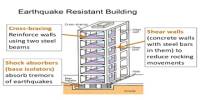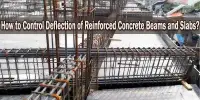Due to the significant influence that bridge building would have on people’s lives, planning is necessary. For bridge construction, social, scientific, and technological aspects must be taken into account. The choice to build a bridge across any obstruction is made to benefit the communities that are located on either side of the project.
Some major bridges bring benefits to the whole country; for example, the bridges constructed across the river Ganga or the Brahmaputra in India. Another example is the Honshu-shikoku connection, that has bridges across many islands in Japan. Similar to the Oresund link, which is being built across the Baltic Sea,
Three Dimensions of Planning for Bridge Construction
There are three dimensions that are involved in the planning of any mega project like a bridge. This is regarded as the first step in the planning of structures, which would ultimately result in a project that would be beneficial to the community in every way. The three dimensions are:
- Scientific Dimension
- Social Dimension
- Technological Dimension
Scientific Dimensions for Bridge Construction
Every construction built must function in accordance with certain natural rules. With the aid of specific interactions between specific elements, scientists are able to explain these natural shapes and the existence of these laws. The sole difference between the scientists’ and engineers’ uses of pre-existing natural technology is the process they went through.
According to them, engineers employ a variety of scientific disciplines to design new materials through chemical analysis, use physics to monitor and study the dynamic behavior of a structure, and use mathematics to evaluate and calculate forces and stresses. Hence efficient structures are evolved with the help of the scientific dimension.
Social Dimension for Bridge Construction
Construction of the bridge considerably facilitates improvement of people’s quality of life. Both the material’s and people’s mobility is enhanced by these structures. This dimension aids in understanding the benefits and drawbacks of this structure as well as the necessary safety measures.
Such a sizable project alters society and its inhabitants, but it also has a negative impact on the environment. In addition to meeting current and anticipated demand for mobility, bridges must also address issues with noise and pollution during and after construction.
As the building is for the benefit of the entire community, the people are likewise committed to and accountable for providing their support for this welfare through taxes, levies, or tolls. This would aid in viewing construction as a profitable endeavor and a means of stimulating the economy.
The social component includes the aforementioned factors. There is also a risk that the political and social dimensions will be combined. This might happen when choosing a location or a facility, or when giving the requirements of the economy economic priority. The scientific and technological dimensions are closely related to the social dimension.
Technological Dimensions for Bridge Construction
Over the years, there have been several technological advancements in the fields of new structures, construction techniques, and materials, as alternatives for rare ones, and in the creation of new machinery that replaces human labor. This technology has aided in introducing and improving solutions for building bridges.
Now instead of bricks, steel, cement etc., construction are carried out by glass fibers, carbon fibers etc. Going through such innovations in technologies, the first FRP material constructed bridge was in China in the year 1982. It composed of five box girders with a clear span of 20.4m.
The development of carbon fiber reinforced polymer i.e. CFRP cables, that gain a strength of 3300Mpa and modulus of elasticity of 165GPa, was also made. These cables are utilized on the Winterthur Bridge in Switzerland. Only two of the twenty-two cables are made of this substance. Higher capabilities of the steel are accessible, including high strength ranging from 60 MPa to 100 MPa, which has exceptional ductility and corrosion resistance. These have influenced new building options, such as arches, cable-supported structures, slender structures, and longer spans. Aerodynamic research, scale models, and computers for large-scale analysis are some of the modern tools used to clearly assess the accurate behavior of structures.
Engineers are compelled to build bridges with bigger carrying capacities as a result of the introduction of new heavy trucks with enormous capacities. This will have an impact on the bridge’s durability and size, as well as the upkeep required for it. All of them have a greater negative influence on the environment, leading to increased air pollution and resource depletion. These enormous constructions are made of a significant amount of concrete, which in turn uses natural aggregates.
The scientific aspect becomes the main factor when it comes to a structural engineer’s worry. But he also needs to strike a balance between the social and technological dimensions. This means that he needs to develop a structure that is economical, long-lasting, and effective while also being socially acceptable. This is dependent on his decision regarding the technological component, which must be made at the project’s conceptualization phase.
Planning Sequence for Bridge Construction
One of the key components of project planning is the planning sequence for the building of a new highway or railway project. The complexity of the barrier that must be crossed for the bridge’s construction affects how precisely the project is planned because more research must be done. In general, the major steps that are involved in the planning for the construction of a new project is mentioned below:
- Identifying the need for the bridge
- Assessment of traffic possible and required in the area proposed to construct the bridge
- Study the location
- Study of all possible alternatives
- Refining and short listing all possible alternatives
- Identifying conceptual plans for the alternatives. This involves finding the materials, the arrangement of the span and the form.
- Preliminary design and the cost estimation
- Evaluating the alternatives, its risk and the final choice of decision
- Resource source identification by detailed surveying
- Implementation with the help of bidding documents. This is followed by carrying out by fixing the agency, the construction details, and their commissioning.
Different Stages of Planning in Bridge Construction
The major steps that are involved in the planning for bridge construction are: 1. Study on Need for Bridge 2. Traffic Assessment 3. Location study 4. Reconnaissance Study a) Study of alternatives b) Feasible alternative study 5. Preliminary Engineering a) Developing plans b) Preliminary design and costing c) Evaluation of alternatives, risk analysis, and final choice 6. Detailed Project Report.
Study on need for Bridge
The choice to build a new bridge in a community is made as part of the society’s development. This makes it possible to connect the towns and cities, which are becoming more vital to a country’s overall development. Their need is studied based on the socio-economic viabilities.
Traffic Assessment for Bridge Construction
An assessment of the traffic type and its quantum is necessary to decide the following factors:
- Number of lanes on the road or the railway tracks
- The geometric design parameters
- Benefits acquired by the society
In order to get a clear picture of how the traffic pattern, growth plans like agricultural, industrial, and commercial developments are effected, careful data gathering is required. The first stages of bridge construction need a significant investment. A little modification or refurbishment after completion is not advised. It is therefore recommended to present a design that takes the future capacity requirements and traffic variables into account. The following criteria should be taken into account when conducting the traffic assessment research. An economist or a traffic planner are generally used to do this.
- The traffic composition, in terms of light and the heavy vehicles
- The maximum and the minimum speed requirements
- The annual growth rate and their variations
- The design life of the bridge
Location Study for Bridge Construction
It is crucial to take into account the requirement and the position of any cross drainage works while conducting a location analysis and choosing the bridge’s final placement. If necessary, the cross-drainage work is estimated to cost between 15 and 20 percent of the total project cost. Therefore, it is essential to identify all potential CD works and their effects before deciding on the alignment for bridge building. The following factors are considered reliable in fixing the location of the bridge.
- Location chosen over a stream with no bends or meanders. It will be straight in reach.
- A stream with no branches or tributaries
- The location being confined with properly defined banks
- If the bridge or the culvert is with the road approach, on either side having maximum extent
- If the crossing is normal to the alignment of the road and angle of skew is necessary, limit it.
Other than the above-specified conditions, the major river crossings of the bridge construction should satisfy the following conditions:
- River regime – Upstream must be a straight river. It must be avoided if there is a curve in the downstream. The river in the reach must be clear of eddies, whirls, and excessive current. The reachable channel is constricted and well defined. There should be solid, impermeable banks along the river channel. In the absence of immovable banks, guide banks in dry areas must also be provided.
- Approaches – The approaches must be protected against flood attacks or any significant spills during floods. Construction of expensive approaches must be avoided. It is advised to pass via populated areas, high hills, significant basins, or places of worship. The main road is reasonably close to the approaches. It shouldn’t permit the expensive connecting link’s building. The best strategy will stay away from underwater construction, which is quite expensive and unprofitable. They ought to contribute to reduced maintenance being required for the entire system, extending the lifespan of the bridges.
Reconnaissance Survey for Bridge Construction
This pre-feasibility study examines the entire river reach that needs to be spanned in order to determine the most advantageous placement for the bridge. Each of the lists of criteria that each site meets is examined separately before the best factor is picked. The total number of viable sites must be reduced to three or four, and this can only be done by carefully examining each site and selecting the best ones. Maps are utilized at this point to locate these potential places. The site is directly assessed to comprehend the location characteristics (local criteria), researching the current and growth of traffic with the aid of surveys, learning information from the locals, easy routes and short cuts in the area, river flow and its distribution are also researched.
A feasibility study is also evaluated in terms of cost efficiency, construction time, and resource sources. Now that all the data has been obtained, a comparison has been done. The most practical location for implementation is selected based on the debate and revision.
Preliminary Engineering for Bridge Construction
It is possible to refer to this stage of planning as a techno-economic feasibility study. Here, the technical information pertaining to the bridge’s construction is thoroughly examined in order to bring about all viable options for moving forward with the building.
Generally speaking, it is discovered that the project’s ultimate cost will be within 15% of the estimate made at this stage of planning. A minimal amount of fieldwork, measurements, location analysis, and related factors must be completed in order to process the technical research. This study carried out at the bridge construction site should bring the following tabulated content details:
- The total length of the bridge
- The length of approaches
- If detours are present, their respective savings
- The anticipated volume of traffic
- The distance to the nearby city or town from the site
- Expected bridge project period
- The nature of stream flowing into the site
- The nature and behavior of soil strata for foundation
- The construction problems existing with bridges or approaches
- Maintenance for the bridges or approaches if any
- The internal rate of return or the cost benefit ratio
- The impact on the environment
Each of the listed factors needs to be given a specific amount of scoring and weighting, which will ultimately aid in selecting the finest site.
Detailed Project Report of Bridge Construction Planning
Prior to the start of the construction work, this stage serves as the last planning stage for the bridge. Full investigation from the roots is taken and documented. The investigations conducted are:
- Ground survey
- Soil exploration foundation details
- Hydrological data
- Model studies and analysis
















